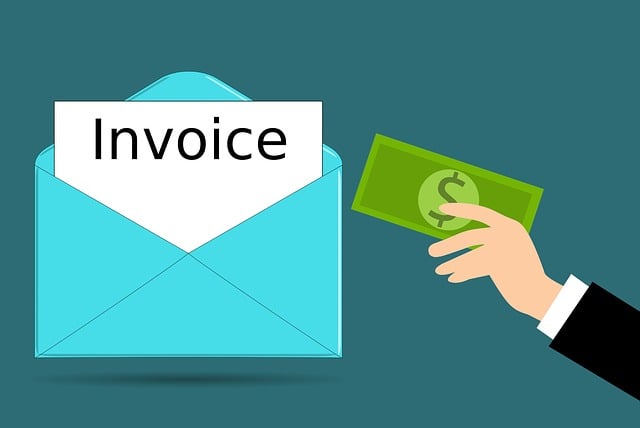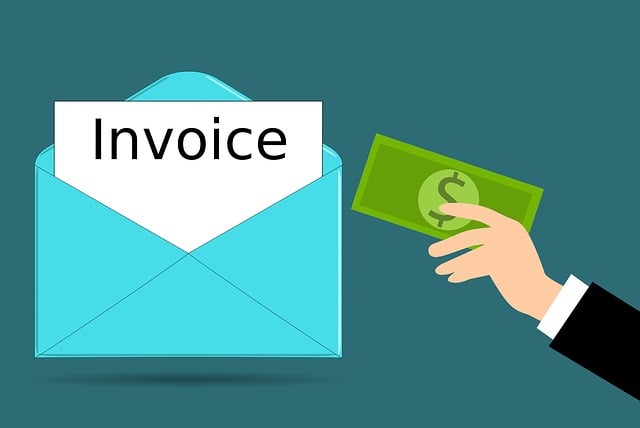Business challenges with unpredictable sales cycles and slow-paying customers create cash flow issues hindering growth. Invoice factoring, offering fast invoice funding by transforming accounts receivable into immediate cash, is a powerful solution. This receivables financing strategy provides quick access to cash, improving cash flow and enabling businesses to manage business liquidity. Invoice factoring benefits include covering expenses, investing in growth, and maintaining financial stability, with no long-term commitments or complex accounting processes. By leveraging this flexible financing option, companies can focus on core activities while enhancing financial performance through enhanced cash flow management.
In today’s competitive business landscape, effective cash flow management is crucial for survival and growth. Understanding and addressing cash flow challenges is essential for businesses to thrive. This article delves into powerful strategies like invoice factoring and receivables financing, offering solutions to boost business liquidity and improve cash flow. Discover how fast invoice funding can unlock quick access to capital, enabling your business to navigate financial peaks and valleys with ease. By the end, you’ll have a comprehensive toolkit for managing your company’s financial health effectively.
- Understanding Cash Flow Challenges for Businesses
- What is Invoice Factoring and How Does it Help?
- Benefits of Invoice Factoring: Boosting Business Liquidity
- Fast Invoice Funding: Unlocking Quick Access to Cash
- Improve Cash Flow with Receivables Financing Strategies
- Measuring Success: Tracking Cash Flow Improvements
Understanding Cash Flow Challenges for Businesses

Many businesses struggle with managing their cash flow effectively, often due to unpredictable sales cycles and outstanding invoices. This can lead to liquidity issues, hindering their ability to cover immediate expenses and invest in growth opportunities. In such scenarios, invoice factoring benefits significantly as a strategic financing solution. By utilizing receivables financing, businesses can transform their accounts receivable into instant cash, providing quick access to funds.
This fast invoice funding method offers an efficient way to improve cash flow, ensuring entrepreneurs have the capital they need to navigate financial challenges. Instead of waiting for customers to settle invoices, factoring allows for immediate liquidity, enabling smoother operations and better resource allocation. It’s a powerful tool to manage business liquidity, catering to various industries’ unique cash flow needs.
What is Invoice Factoring and How Does it Help?

Invoice factoring is a financial strategy that offers businesses an efficient way to improve cash flow and manage business liquidity. It’s a type of receivables financing where companies sell their outstanding invoices (debts owed by customers) to a third-party funder, known as a factor. This process provides fast invoice funding, enabling businesses to access quick access cash before the usual payment term elapses.
By utilizing this method, businesses can free up capital tied up in accounts receivable and gain better control over their immediate financial needs. It helps streamline the collection process and reduces the risk of late payments, ensuring a steady and improved cash flow position. This invoice factoring benefit is particularly valuable for companies with inconsistent or slow-paying customers, allowing them to maintain a healthy financial balance and support their day-to-day operations.
Benefits of Invoice Factoring: Boosting Business Liquidity

Invoice Factoring offers a powerful solution for businesses aiming to improve cash flow and manage business liquidity. This financial strategy provides fast invoice funding, enabling companies to access quick access cash before the typical settlement date of invoices. By using receivables financing, businesses can transform their outstanding invoices into immediate capital, thereby enhancing their operational capabilities and financial stability.
The invoice factoring benefits extend beyond improved cash flow. It allows firms, especially those with seasonal sales or lengthy payment terms, to avoid the strain of waiting for customers to settle invoices. This swift funding helps in covering immediate expenses, investing in growth opportunities, or managing unexpected financial setbacks, ultimately contributing to a smoother and more predictable cash flow.
Fast Invoice Funding: Unlocking Quick Access to Cash

Fast Invoice Funding is a game-changer for businesses looking to improve cash flow and manage business liquidity. This innovative financing solution, also known as invoice factoring, allows companies to unlock quick access to cash by leveraging their outstanding invoices. Instead of waiting for customers to pay, businesses can sell these invoices to a third-party funder at a discounted rate, receiving the funds immediately. This method provides a steady stream of capital, enabling companies to cover immediate expenses, invest in growth opportunities, or simply maintain operational stability.
The invoice factoring benefits are numerous. It offers a flexible financing option with no long-term commitments, allowing businesses to manage their receivables financing based on their unique cash flow needs. Furthermore, it streamlines the accounting process by shifting the responsibility of collecting invoices from the business to the funder, saving time and resources. With fast invoice funding, businesses can focus on what they do best while ensuring they have the financial flexibility to thrive in today’s competitive market.
Improve Cash Flow with Receivables Financing Strategies

Many businesses struggle with managing their cash flow due to slow-paying customers and lengthy invoice payment cycles. This is where receivables financing strategies, such as invoice factoring, come into play. Invoice factoring offers a range of benefits designed to improve cash flow and enhance business liquidity. By selling outstanding invoices to a third-party funder, businesses can gain fast access to cash—typically within 24 to 72 hours—allowing them to meet their immediate financial obligations and operational needs.
This funding method provides a win-win scenario: businesses secure the capital they need quickly while factoring companies assume the credit risk associated with collecting the invoices. Additionally, invoice factoring can free up time for business owners, enabling them to focus on core operations and growth strategies rather than chasing payments. It’s an efficient way to manage receivables and ensures a steady stream of cash, promoting the overall health and stability of any organisation.
Measuring Success: Tracking Cash Flow Improvements

Measuring Success: Tracking Cash Flow Improvements
Evaluating the success of cash flow management strategies is key to understanding their effectiveness and making informed adjustments. One powerful metric to track is the improvement in cash flow velocity, which refers to how quickly a business can convert accounts receivable into actual cash. By utilizing invoice factoring benefits, such as fast invoice funding, businesses gain quick access to cash tied up in outstanding invoices, thereby improving overall liquidity. This shift from traditional slow payment methods to faster alternatives like receivables financing can significantly transform a company’s financial health.
To quantify these improvements, compare key performance indicators (KPIs) before and after implementing enhanced cash flow management practices. Look at metrics like days sales outstanding (DSO), which measures the average number of days it takes for a business to collect payment from customers. A decreasing DSO indicates improved cash flow, meaning the business is collecting money faster. Additionally, monitor cash conversion cycle (CCC), which represents the time lag between incurring expenses and receiving cash from sales—a shorter CCC suggests more efficient management of business liquidity.






